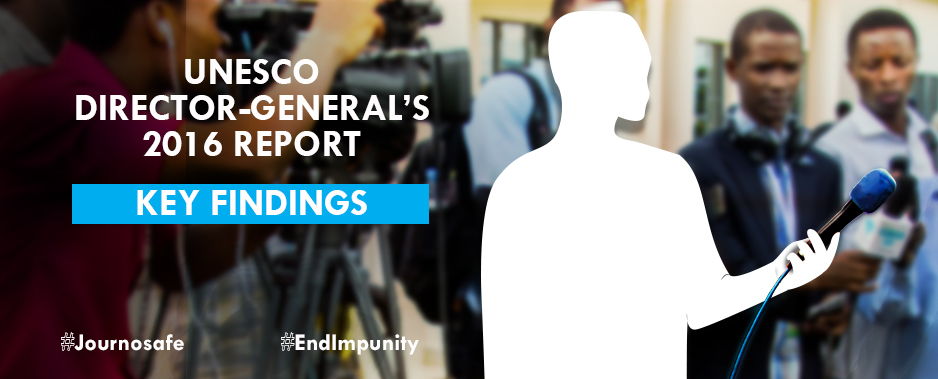
UNESCO Director-General's Report on the Safety of Journalists and the Danger of Impunity
dg-report_post-2nov_en.jpg

The 2016 UNESCO Director-General Report on the Safety of Journalists and the Danger of Impunity offers an overview of the killings of journalists condemned by the Director-General in 2014-2015. It also provides an analysis of a decade of killings of journalists, media workers and social media producers between 1 January 2006 and 31 December 2015. The extent of the risks faced by journalists is demonstrated by the 827 killings recorded by UNESCO over the course of ten years. To this, one needs to add the countless other violations endured by journalists, which include kidnappings, arbitrary detention, torture, intimidation and harassment, both offline and online, and seizure or destruction of material. This Report is focused exclusively on the killings of journalists, the ultimate form of censorship.
The UNESCO Director-General Report responds to a call from the 39 Member States of the Intergovernmental Council of UNESCO’s International Programme for the Development of Communication (IPDC). The 2016 UNESCO Director-General Report was presented at the 30th Session of the Intergovernmental Council on 17 November. Learn more about the UNESCO Director-General Report here.
Read the 2016 UNESCO DG Report on the Safety of Journalists and the Danger of Impunity Brochure
Check your country:
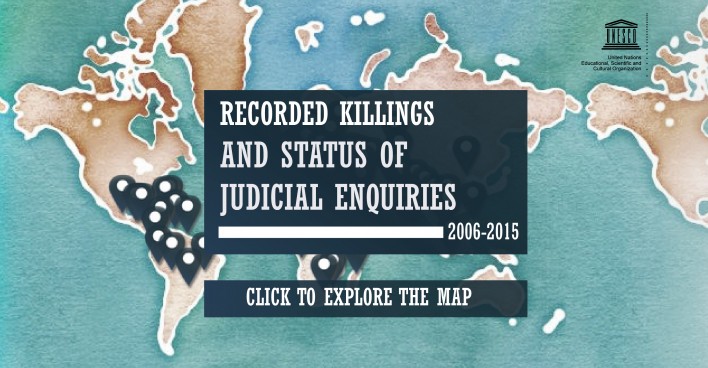
Key Findings 2014-2015
In 2014-2015 alone, UNESCO’s Director-General condemned the killing of 213 journalists; 2015 was the second deadliest year for journalists in the last ten years with 115 journalists killed. In 2014, UNESCO recorded 98 cases of killings of journalists.
In terms of regional breakdown, the Arab States were most affected by journalists’ killings in the last biennium, with 36,5% of all cases (or 78 killings) occurring in this region. This is largely due to ongoing conflict situations in the Syrian Arab Republic, Iraq, Yemen and Libya.
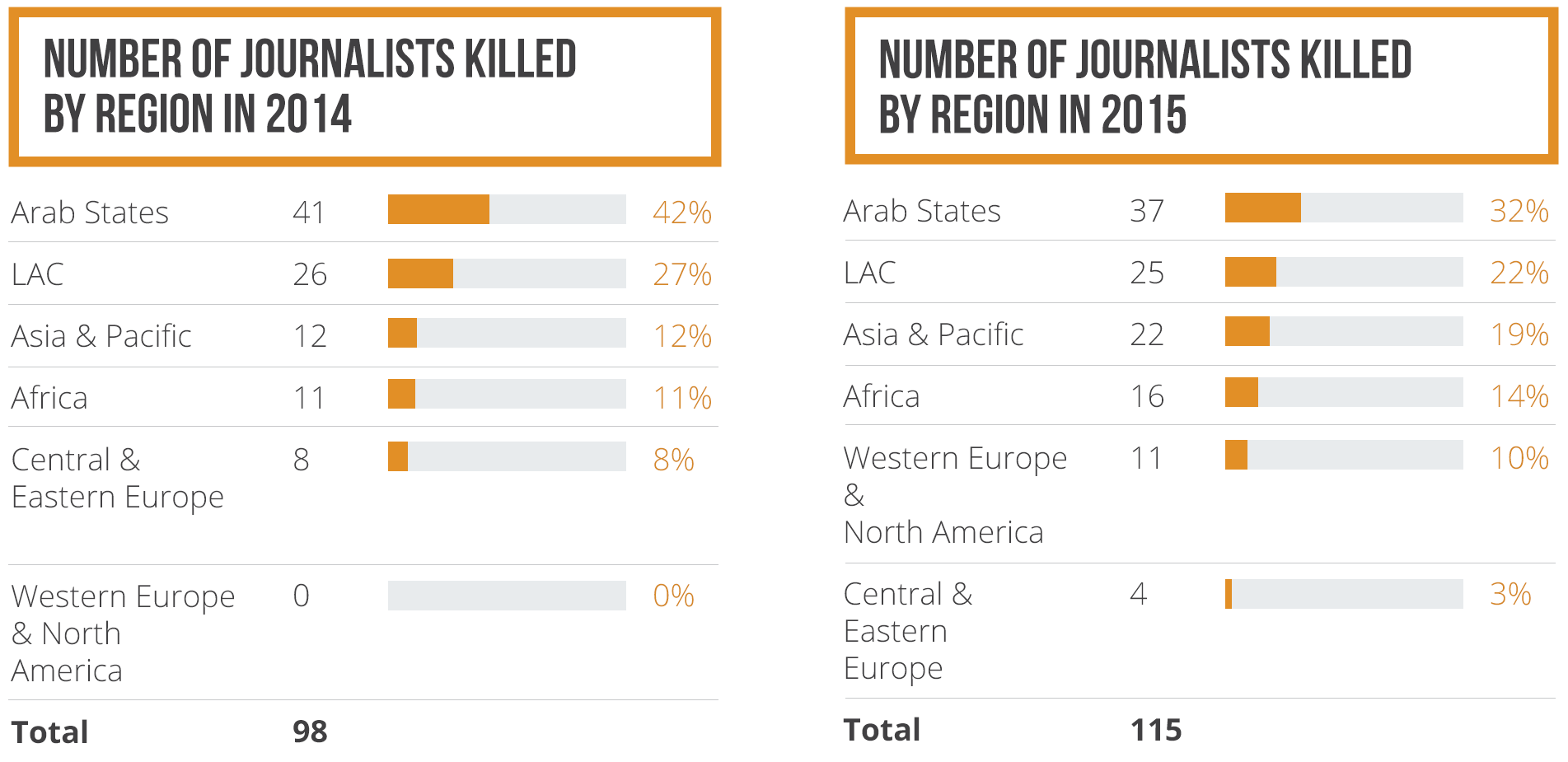
A gender-based analysis of the victims of journalists’ killings in 2014-2015 reveals that, as in previous years, men have been the target of a far greater number of killings than women, with 195 fatalities among male journalists against 18 among female journalists. This difference goes beyond the imbalanced representation of women in news media organizations and may partially be explained by the fact that fewer women journalists cover conflict zones.
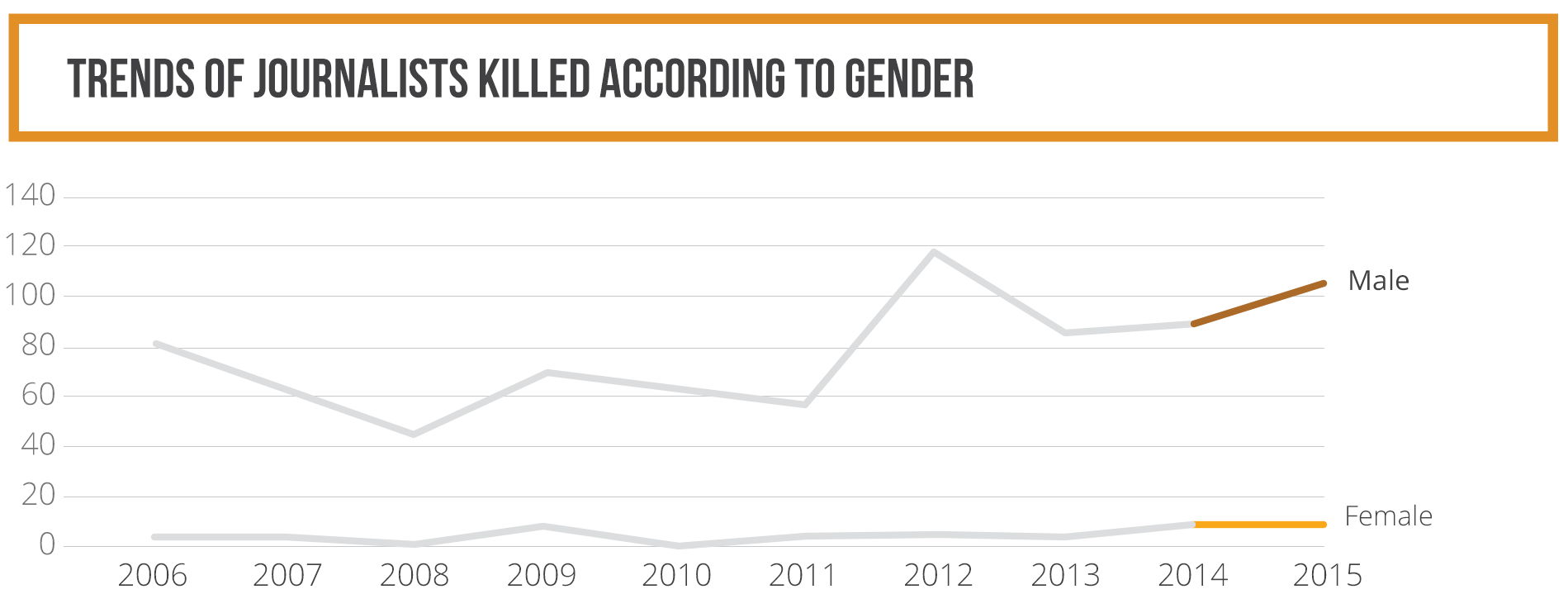
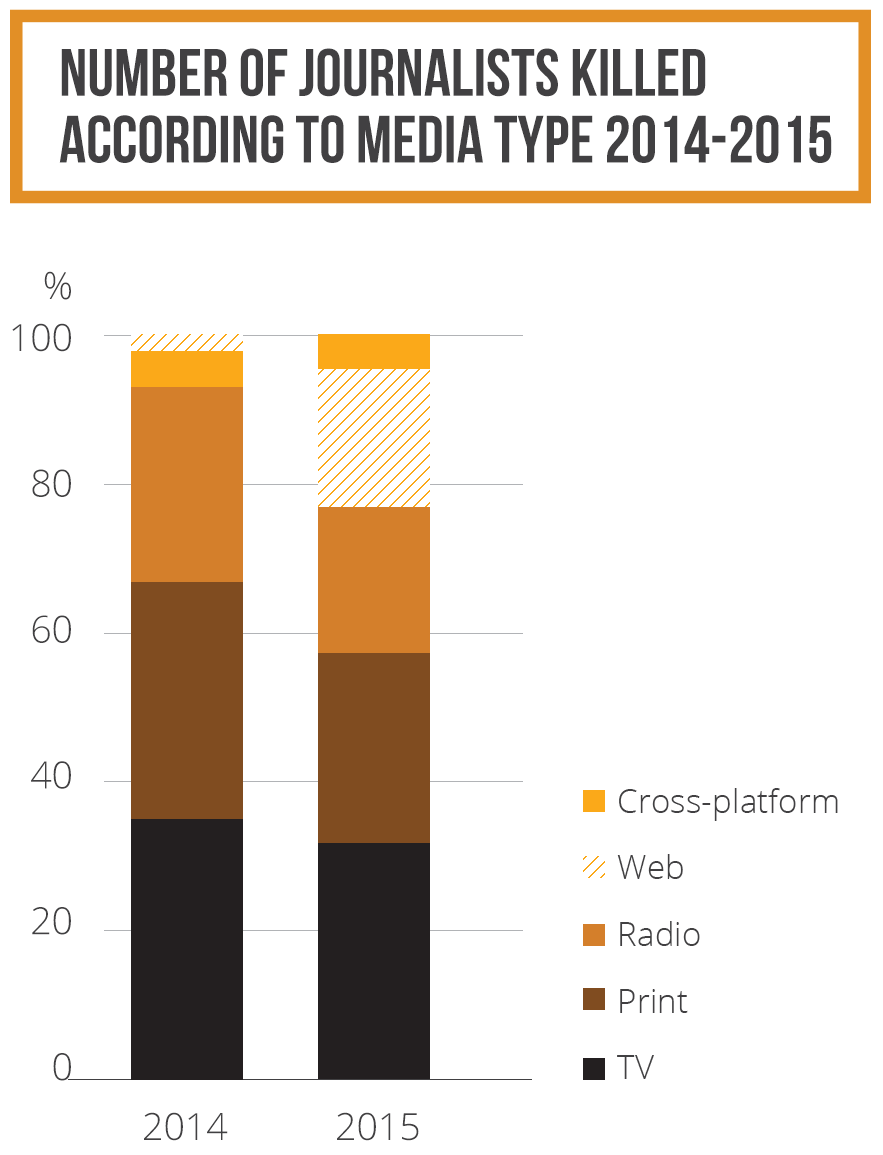
Confirming a trend that could be noted throughout the decade, the vast majority of victims – representing almost 90% - were local journalists. In 2014, there was however a significant increase in the number of foreign journalists killed, with 17 such cases compared to an average of four in previous years.
Freelance journalists, who work independently and often without adequate protections, are widely considered the most vulnerable group in the media sector. Forty freelance journalists or citizen journalists operating online were killed in 2014-2015, representing 19% of all cases.
Reflecting the extreme vulnerability of journalists working in conflict zones, UNESCO’s statistics on journalists killed in 2014-2015 show that most of the killings took place in countries where there has been armed conflict, with 126 cases (or 59% of all cases).
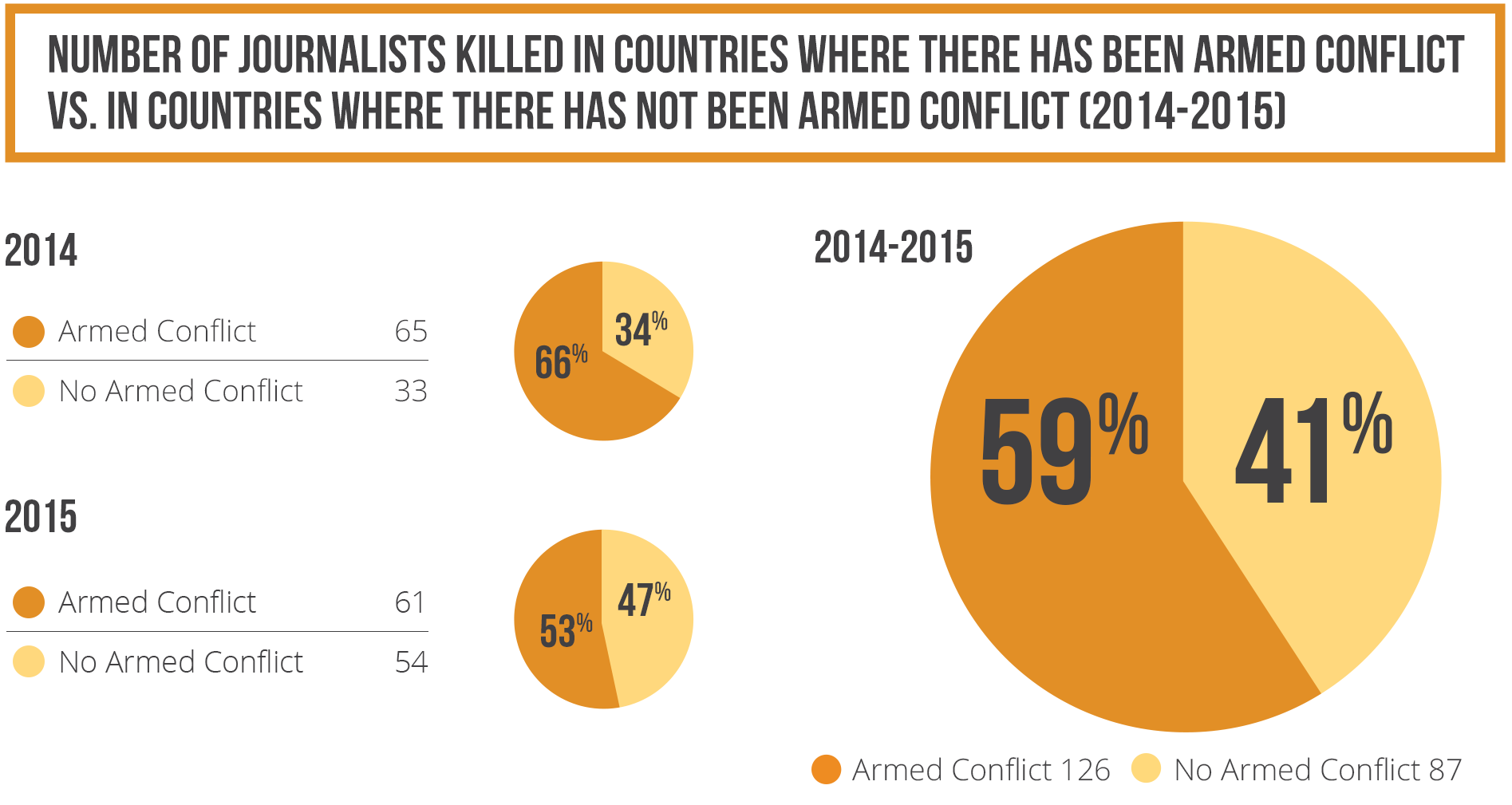
Contacts
Saorla McCabe
Programme Specialist
Communication and Information Sector (CI)
Mail: s.mccabe(at)unesco.org
Tel.: +33 (0) 1 45 68 42 62
Gerwin De Roy
Consultant
Communication and Information Sector (CI)
Mail: g.de-roy(at)unesco.org
Tel.: +33 (0) 1 45 68 04 48
